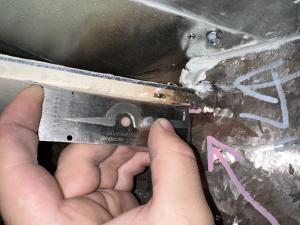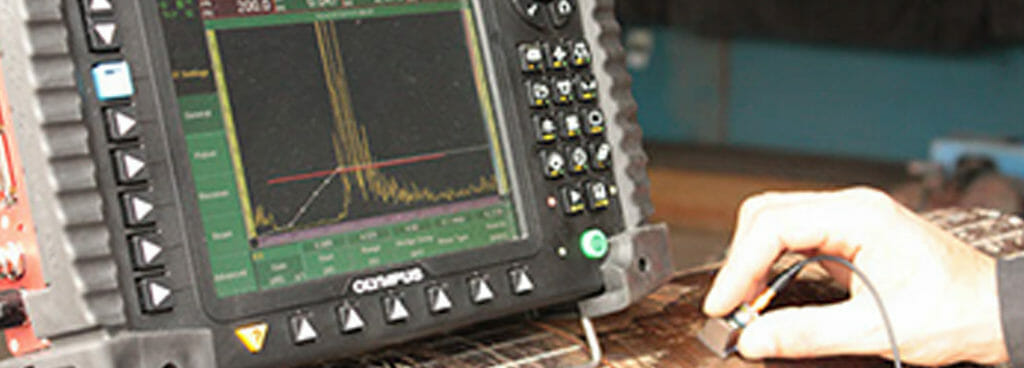Comprehending the Process of Welding Inspection Racine for Optimal Results
Comprehending the Process of Welding Inspection Racine for Optimal Results
Blog Article
Ingenious Techniques to Fillet Weld Inspection and Screening: Enhancing Weld Top Quality and Compliance Standards
In the world of welding, the high quality and stability of fillet welds play a critical duty in ensuring the structural strength and dependability of various industrial parts. With the consistent drive for boosted performance and compliance with stringent criteria, the expedition of cutting-edge methods to fillet weld evaluation and screening has actually ended up being important. As sectors evolve, the conventional methods might no longer suffice in meeting the demands of contemporary welding applications. By welcoming advanced technologies and methods, a new perspective of possibilities arises in the realm of weld high quality analysis and adherence to conformity standards.
Advanced Non-Destructive Testing Methods
Using cutting edge innovations, advanced non-destructive testing approaches play an essential role in ensuring the integrity and top quality of fillet welds. These methods, such as phased array ultrasonic screening (PAUT) and magnetic particle testing (MPT), offer detailed understandings into the weld's inner structure without triggering any kind of damages to the product. PAUT, for instance, makes use of multiple ultrasonic elements to check the weld from various angles, supplying a comprehensive visualization of prospective issues like lack of fusion or splits.
Likewise, MPT is reliable in detecting surface-breaking flaws by applying a magnetic area and iron fragments to the weld area. This method is especially valuable for identifying interruptions that might endanger the weld's stamina. By employing these sophisticated non-destructive screening techniques, weld examiners can accurately assess the quality of fillet welds, making sure conformity with market standards and laws. The capability to find defects beforehand not only boosts weld top quality however additionally stops expensive rework or failings in architectural integrity, underlining the importance of these ingenious testing techniques in welding inspections.
Robotics and Automation in Evaluation
The integration of robotics and automation has revolutionized the assessment procedure for fillet welds, improving effectiveness and accuracy in high quality assessment. Robotics use accurate control and repeatability in inspecting welds, guaranteeing consistent and reliable outcomes. Automated systems can be set to comply with details assessment paths, guaranteeing extensive protection of welds and decreasing the risk of human mistake.
Robotic evaluation systems furnished with advanced sensors can find and measure weld functions with high accuracy, providing thorough data for analysis. These systems can determine issues such as fractures, lack of combination, and porosity, enabling prompt rehabilitative actions to be taken. In addition, robotics and automation permit real-time data collection and analysis, supplying prompt feedback to drivers and assisting in fast decision-making procedures.
Moreover, the usage of robotics and automation in fillet weld inspection boosts overall efficiency by minimizing inspection times and increasing assessment throughput. By enhancing the evaluation procedure, makers can make sure weld top quality and conformity requirements are satisfied effectively, inevitably bring about set you back financial savings and boosted item high quality.
Making Use Of Artificial Intelligence for Analysis
Artificial knowledge plays a pivotal function in improving the effectiveness and precision of evaluation in fillet weld assessment processes. AI formulas can swiftly process huge amounts of information from weld inspections, detecting problems or disparities that may be challenging to identify with the naked eye - Welding Inspection Racine.
Furthermore, AI systems can find out from previous examination information, continuously boosting their ability to identify potential problems and deviations in fillet welds. This adaptive understanding capacity enhances the overall quality assurance procedure, decreasing the probability of human her comment is here mistake and guaranteeing that welds fulfill the required requirements. By integrating man-made knowledge into fillet weld evaluation, industries can accomplish higher levels of effectiveness, consistency, and compliance in their examination practices.
Portable Devices for On-Site Examination
 Enhancing field examination efficiency, the fostering of portable tools reinvents on-site assessment processes for fillet welds. These devices supply adaptability and comfort, permitting inspectors to carry out detailed examinations in numerous areas, including difficult or remote environments. Mobile devices such as ultrasonic screening devices, magnetic bit inspection equipment, and electronic radiography systems provide real-time data and high-resolution imaging capacities, enabling quick decision-making and prompt comments on weld high quality.
Enhancing field examination efficiency, the fostering of portable tools reinvents on-site assessment processes for fillet welds. These devices supply adaptability and comfort, permitting inspectors to carry out detailed examinations in numerous areas, including difficult or remote environments. Mobile devices such as ultrasonic screening devices, magnetic bit inspection equipment, and electronic radiography systems provide real-time data and high-resolution imaging capacities, enabling quick decision-making and prompt comments on weld high quality.One significant benefit of portable tools is their capacity to improve inspection procedures, decreasing downtime and improving overall productivity. Inspectors can conveniently transport these tools to different job sites, removing the requirement for transferring hefty equipment or parts to off-site centers. Furthermore, the mobility of these devices promotes cost-effectiveness by reducing transport expenses and accelerating evaluation timelines.
Furthermore, the use of portable devices for on-site examination promotes positive quality assurance procedures, as assessors can immediately identify and deal with any potential welding issues or inconsistencies. By integrating these ingenious technologies right into on-site inspection techniques, welding professionals can make certain compliance with market standards and enhance weld high quality, inevitably causing improved architectural honesty and safety in various welding applications.
Combination of Data Administration Solution
Having actually optimized on-site inspection processes with the application of portable tools, the following stage includes the smooth assimilation of data administration systems to better improve performance and information evaluation capacities in fillet weld examination and testing. Welding Inspection Racine. By integrating information administration systems into the examination procedure, companies can improve information collection, storage, and evaluation. This assimilation permits real-time monitoring of weld top quality, instant identification of problems, and timely decision-making to correct any type of issues that may occur throughout the examination process
The integration of information management systems allows seamless interaction in between different stakeholders involved in the examination process, fostering collaboration and boosting total high quality control steps. Ultimately, the combination of data administration systems serves to elevate the standards of fillet weld inspection and screening, making sure conformity with sector policies and enhancing weld high quality.
Final Thought
Finally, cutting-edge approaches to fillet weld examination and screening have actually substantially boosted weld quality and compliance standards. Advanced non-destructive screening approaches, robotics, automation, synthetic knowledge, portable devices, and data administration systems have actually revolutionized the method weld examinations are carried out. By utilizing these technologies, sectors can guarantee that welds satisfy the required quality requirements and laws, eventually enhancing total efficiency and safety in welding processes.

By utilizing these sophisticated non-destructive screening strategies, weld examiners can accurately analyze the top quality of fillet welds, making certain compliance with market criteria and check laws. Mobile tools such as ultrasonic testing gadgets, magnetic bit assessment equipment, and electronic radiography systems supply real-time data and high-resolution imaging capacities, allowing quick decision-making and prompt responses on weld top quality.
Having optimized on-site inspection processes through the utilization of portable devices, the next phase involves more helpful hints the smooth integration of information management systems to further boost effectiveness and information evaluation capabilities in fillet weld assessment and testing (Welding Inspection Racine). Eventually, the assimilation of information administration systems serves to boost the requirements of fillet weld inspection and testing, ensuring compliance with sector guidelines and enhancing weld quality
 In verdict, ingenious techniques to fillet weld inspection and testing have actually dramatically boosted weld quality and conformity requirements.
In verdict, ingenious techniques to fillet weld inspection and testing have actually dramatically boosted weld quality and conformity requirements.Report this page